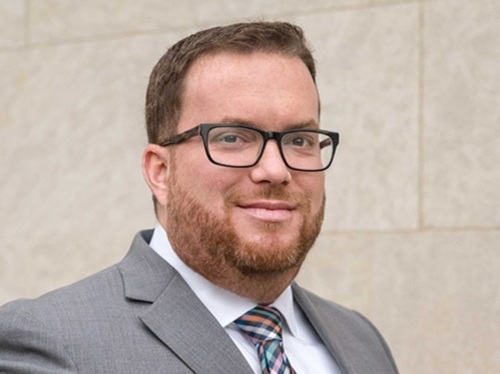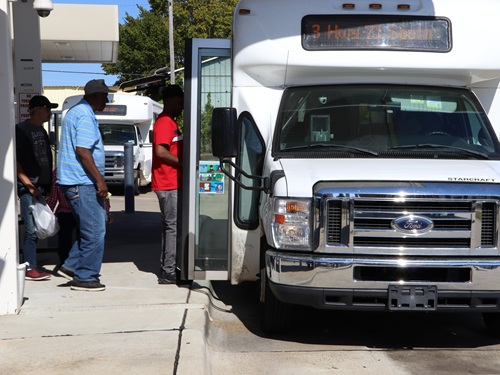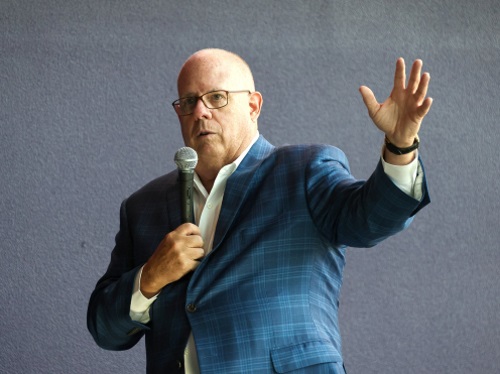Governor Larry Hogan (R) (seen above) recently highlighted the disbursement of more than $13 million in federal and state-funded safety grants as part of a statewide focus to prevent motor vehicle crashes and eliminate roadway fatalities.
[Above photo by the Maryland Governor’s Office]
He noted that distribution of state funds referenced above occurred at the start of the Maryland government’s fiscal year, with the federal funds distributed by October 1.

The Motor Vehicle Administration – a division of the Maryland Department of Transportation – issues both sets of funds via its Highway Safety Office. In all, more than 90 organizations, agencies, and programs will receive funds.
The Maryland DOT expects that funding to focus on several specific safety efforts:
- Increase the use of seat belts in all seats.
- Prevent impaired, aggressive, and distracted driving.
- Increase safety for pedestrians, motorcyclists, and bicyclists.
- Promote the correct use of child safety seats.
- Support police training for highway safety and traffic enforcement.
- Fund overtime enforcement of Maryland’s traffic laws.
- Increase the efficiency and capability of Maryland’s traffic data systems.
“Since the beginning of our administration, we have worked to ensure safety on our highways through innovative projects and partnerships,” Gov. Hogan said in a statement. “These grants will continue to help reduce crashes and fatalities all across the state and ensure highway safety remains a top priority.”

Maryland DOT Secretary James Ports noted that, in 2019, Maryland enacted the Vision Zero initiative that set a goal of zero fatalities and serious injuries on state roadways by 2030. This goal guides partners as they implement safety programs with grant funding.
Vision Zero also serves as a blueprint in development and implementation of Maryland’s 2021-2025 Strategic Highway Safety Plan, a comprehensive, multi-faceted approach to reduce fatalities and serious injuries across the state utilizing the “Four Es” of traffic safety—education, engineering, enforcement, and emergency medical services.
“To eliminate crashes and fatalities in Maryland, we need to work together as partners at the local, state, and federal levels to maintain a safe and reliable highway system and reinforce good driving behaviors,” Ports said. “These grants affirm [our] commitment to invest in critical transportation projects and initiatives that benefit residents, visitors, and businesses across Maryland.”
In 2021, there were 562 traffic deaths on Maryland roadways, including 131 pedestrians and six bicyclists – down compared to 2020, when the state suffered 573 fatalities, including 138 pedestrians and 15 bicyclists.
Yet Maryland DOT noted that police reports continue to show speed, driver impairment, and inadequate or improper seat belt use remain the most common contributing factors in motor vehicle fatalities.
Nationally, however, highway fatalities are on the rise. In August, the National Highway Traffic Safety Administration estimated that 9,560 people died in motor vehicle traffic crashes in the first quarter of 2022 – an increase of about 7 percent as compared to the 8,935 fatalities projected for the same quarter in 2021. This would be the highest number of first-quarter fatalities since 2002, NHTSA said.
 States
States
Nick Donohue Appointed Virginia’s Secretary of Transportation
December 12, 2025 States
States

